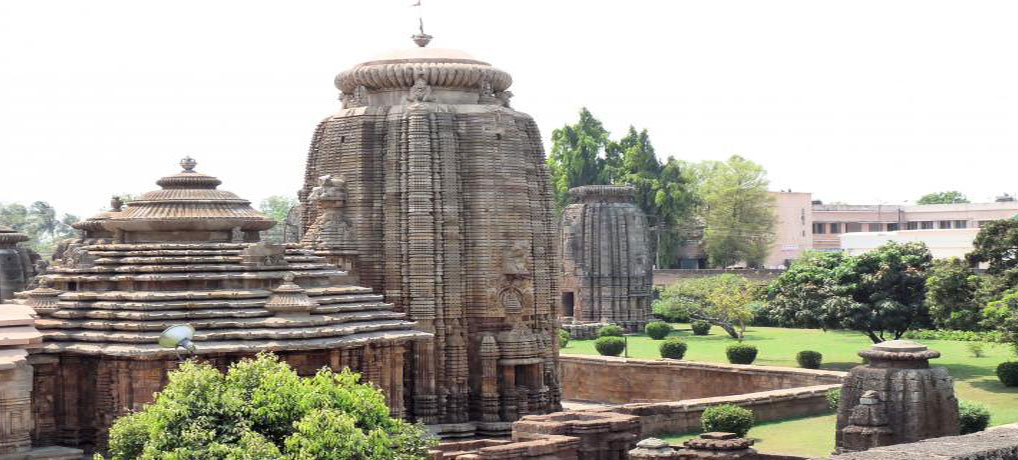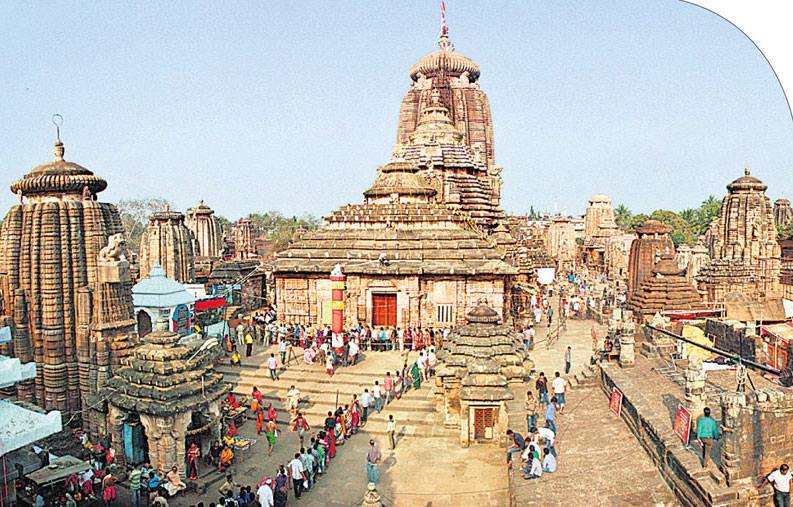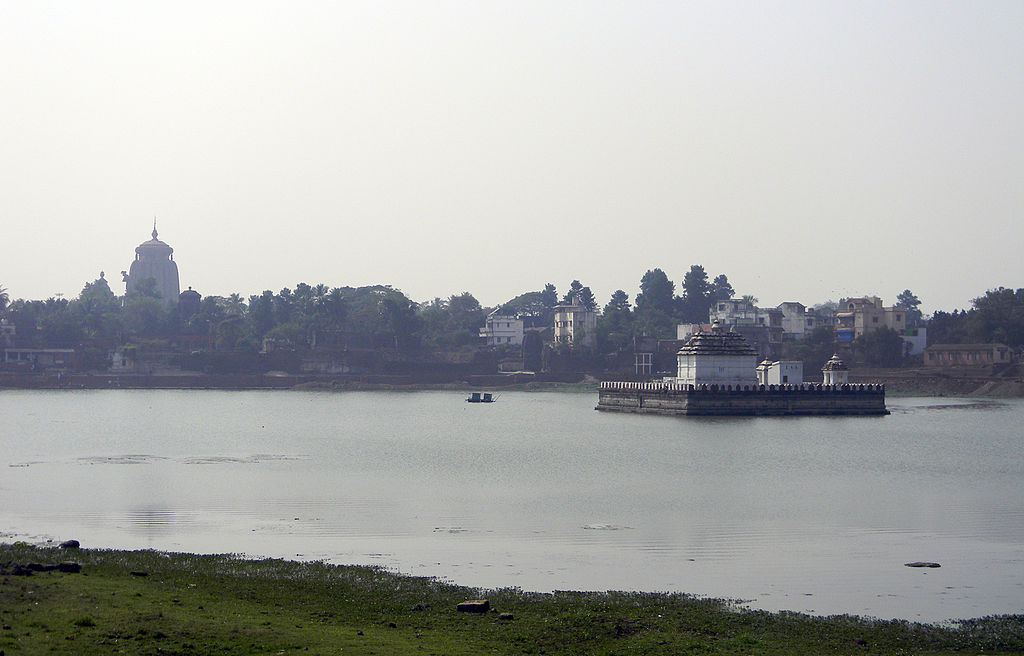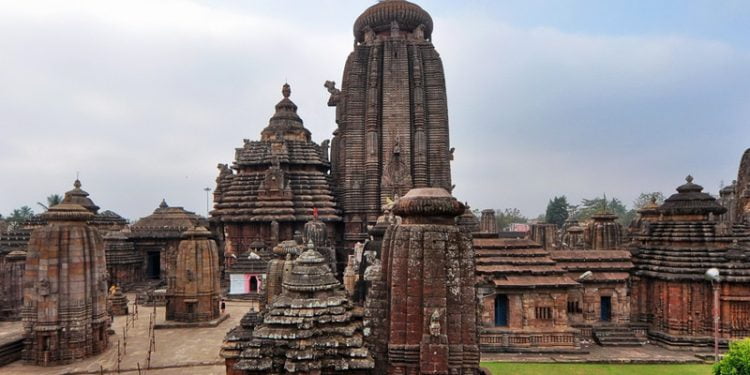Lingaraja temple is the largest temple in Bhubaneswar. The central tower of the temple is 180 ft tall. The temple represents the quintessence of the Kalinga Architecture and culminating the medieval stages of the architectural tradition at Bhubaneswar. The temple is believed to be built by the kings of the Somavamsi dynasty, with later additions from the Ganga rulers.
Shrine’s History
Lingaraj, literally means the king of Lingam, the iconic form or Shiva. Shiva was originally worshipped as Kirtivasa and later as Harihara and is commonly referred as Tribhuvaneshwara, the master of three worlds, namely, heaven, earth and netherworld. His consort is called Bhuvaneshvari. The temple in its present form dates back to the last decade of the eleventh century. There is evidence that part of the temple was built during the sixth century CE as mentioned in some of the seventh centuries Sanskrit texts.
Fergusson believes that the temple might have been initiated by Lalat Indu Keshari who reigned from 615 to 657 CE. The Assembly hall , sanctum and temple tower were built during the eleventh century, while the Hall of the offering was built during the twelfth century. The natamandira was built by the wife of Salini between 1099 and 1104 CE. By the time the Lingaraj temple was completely constructed, the Jagannath sect had been growing in the region, which historians believe, is evidenced by the co-existence of Vishnu and Shiva worship at the temple.
The kings of Ganga dynasty were ardent followers of Vaishnavism and built the Jagannath Temple at Puri in the 12th century. As per some accounts, the temple is believed to have been built by the Somavanshi king Yayati I , during the 11th century CE. Jajati Keshari shifted his capital from Jajpur to Bhubaneswar which was referred to as Ekamra Kshetra in the Brahma Purana, an ancient scripture. One of the Somavamsi queens donated a village to the temple and the Brahmins attached to the temple received generous grants.
An inscription from the Saka year 1094 indicates gifts of gold coins to the temple by Rajaraja II. Another inscription of Narasimha I from the 11th century indicates an offer of beetel leaves as tambula to the presiding deity. Other stone inscriptions in the temple indicate royal grants from Chodaganga to the nearby village people. K.C. Panigrahi mentions that Yayti I had no time to build the temple and it should have been initiated by his sons Ananta Kesari and Udyota Kesari. The argument provided against the view is that is his weak successors could not have constructed such a magnificent structure.

Legends Associated with This Shrine
Bhubaneswar is called the Ekamra Kshetra as the deity of Lingaraj was originally under a mango tree (Ekamra). Ekamra Purana, a Sanskrit treatise of the 13th century mentions that the presiding deity was not seen as lingam during the Satya and Treta yugas and only during the Dwapara and Kali Yuga yugas, it emerged as a lingam. The lingam in the temple is a natural unshaped stone that rests on a Sakti. Such a lingam is called Krutibasa or Swayambhu and is found in 64 places in different parts of India.
With the advent of the Ganga dynasty in the early 12th century, who had Vaishnavaite orientation, a new movement started resulting in the synthesis of Saivism and Vaishnavism. The Ekamra was associated with Vaishanavite gods Krishna and Balaram during the period. It is attributed the rising prominence of Jagannath sect that became predominant during the construction of the temple. The Gangas remodelled the temple and introduced certain Vaishnavite elements like images of Vaishnava Dwarapalas namely Jaya and Prachanda, Jagannatha, Lakshmi Narayan and Garuda were installed.
Tulsi leaves, which are favoured by Vishnu, was used along with Bela leaves for the worship of Lingaraj. Lingaraja thus came to be known as Harihara, a combination of Shiva and Vishnu. The flag of the temple was fixed to a Pinaka bow instead of trident usually found in Shiva temples. The temple priests also changed the mark in their forehead from horizontal to a “U” sign with a dotted middle line. The Gangas also introduced certain fairs like Swing festival, Sun worship and mock quarrel between priests after chariot festival, similar to the practices in Jagannath Temple in Puri. The influence of the Ganga dynasty has led to a cosmopolitan culture, that has reduced the status of Lingaraja temple as a distinct Saivite shrine.

Architectural Relevance of This Shrine
The Lingaraj temple is the largest temple in Bhubaneswar. James Ferugsson (1808?86), a noted critic and historian rated the temple as “one of the finest examples of purely Hindu temple in India”. It is enshrined within a spacious compound wall of laterite measuring 520 ft by 465 ft . The wall is 7.5 ft thick and surmounted by a plain slant coping. Alongside the inner face of the boundary wall, there is a terrace to protect the compound wall against outside aggression. The tower is 45.11 m high and the complex has 150 smaller shrines in its spacious courtyard.
Each inch of the 55 m tall tower is sculpted. The door in the gate of the entrance porch is made of sandalwood. The Lingaraja temple faces east and is built of sandstone and laterite. The main entrance is located in the east, while there are small entrances in the north and south. The temple is built in the Deula style that has four components namely, vimana, jagamohana (assembly hall), natamandira and bhoga-mandapa (hall of offerings), with all four in axial alignment with descending height. The dance hall was associated with the rising prominence of the devadasi system that existed during the time.
The various units from the Hall of offering to the tower of the sanctum increase in height. The bhogamandapa (Hall of offering) measures 42 ft 42 ft from the inside, 56.25 ft 56.25 ft from the outside and has four doors in each of the sides. The exterior walls of the hall have decorative sculptures of men and beast. The hall has a pyramidal roof made of up several horizontal layers arranged in sets of two with the intervening platform. It bears an inverted bell and a kalasa in the top. The natamandira (festival hall) measures 38 ft 38 ft (12 m) from the inside, 50 ft 50 ft from the outside, has one main entrance and two side entrances.
The side walls of the hall have decorative sculptures displaying women and couples. It has a flat roof sloping in stages. There are thick pylons inside the hall. The jagamohana (assembly hall) measures 35 ft 30 ft from the inside, 55 ft 50 ft (15 m) from the outside, entrances from south and north and has a 30 metres (98 ft) tall roof. The hall has a pyramidal roof made of up several horizontal layers arranged in sets of two with the intervening platform as in the Hall of an offering. The facade to the entrances is decorated with perforated windows with the lion sitting on hind legs. The inverted bell above the second unit is adorned by kalasa and lions.
The rekha deula has a 60 m (200 ft) tall pyramidal tower over the sanctum and measures 22 ft 22 ft (6.7 m) from the inside, 52 ft 52 ft from the outside over the sanctum. It is covered with decorative design and seated lion projecting from the walls. The sanctum is square in shape from the inside. The tower walls are sculpted with female figures in different poses. The temple has a vast courtyard mired with hundreds of small shrines.

Shrine’s Map Location and How to Go There
By Road
The New Bus Stand which is located at a distance of 6 km from the town center connects well to the major cities around Bhubaneswar. Bhubaneswar is connected to Puri (56 km) and Konark 36 km by regular bus services.
By Rail
Bhubaneswar railway station is about 6 km away from the city center. This railhead is well-connected to the metro cities and also to the cities Delhi (Bbs Duronto Exp), Kolkata (Falaknuma Exp), Hyderabad (Konark Express), Chennai (Coromandal Exp), Mumbai (Puri Ltt Sf Exp) and Bangalore (Bbs Ypr Sup Exp).
By Air
Biju Patnaik airport at Bhubaneswar is nearly 5 km away from the heart of the city. The airport is connected to Delhi and Mumbai. International travellers need to get connections through Delhi.

Shrine Timings
6:00 a.m. to 12:30 p.m. and 3:30 p.m. to 9:30 p.m.
Events Celebrated at This Shrine
Shivaratri
Extra Information About this Shrine
Best Season to Visit October and March
Worship: A total of 22 worship services are offered each day. Once a year, an image of Lingaraja is taken to the Jalamandir in the center of the Bindu Sagar lake. Other temples in Bhubaneshwar are the Ananta Vasudeva, RajaRani, Mukteswara, Kedareswara, Siddheswara, Parasurameswara.













































